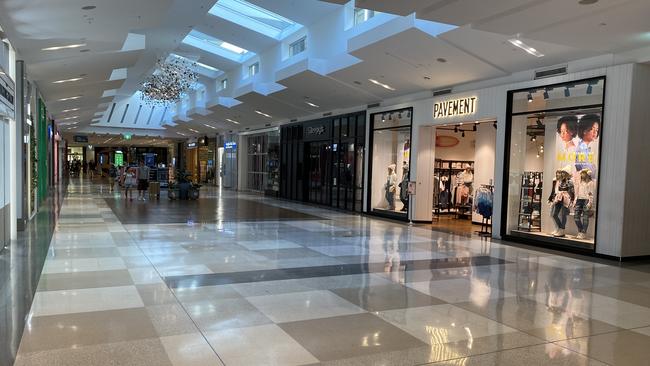Southeast Queensland shopping centre vacancy rate soars to 8.5 per cent
The COVID-19 pandemic has smashed shopping centres, with southeast Queensland recording the highest retail vacancy rate in Australia.
Prime Site
Don't miss out on the headlines from Prime Site. Followed categories will be added to My News.
SOUTHEAST Queensland shopping centres have recorded the highest retail vacancy rate in Australia as the coronavirus lockdown bites.
According to JLL research, shopping centre vacancies in southeast Queensland hit 8.5 per cent in June compared to 5.2 per cent in December.
Over the same period the national vacancy rate increased to 5.1 per cent in June from 3.8 per cent in December last year, to the highest level in more than 20 years.
Radio Rentals permanently closes stores, hundreds out of work
Cotton On closes its stores due to coronavirus
JLL’s head of retail, property & asset management — Australia, Tony Doherty said there has been a rebound in sales and foot traffic at the lowest in April across the agency’s managed portfolio of about 300 centres.
“But about 5-10 per cent of stores remain temporarily closed across the industry,” he said.
“There is a major operational focus for us on ensuring shopping centres are safe places as social restrictions have lifted in most states.”
JLL Research did not count temporary store closures as vacant in the survey.
The survey takes in regional, subregional and neighbourhood and when the CBD and Large Format Retail centres were added the southeast Queensland vacancy rate was 9.3 per cent in June compared to 5.7 per cent in December last year.
Nationally the all retail rate increased 4.8 per cent to 6.3 per cent over the same period.

The survey comes as a raft of national retail chains announced permanent closures of stores, including Target, Radio Rentals, Jeanswest, Cotton On, Sea Folly and Bardot.
JLL’s senior director of retail research — Australia, Andrew Quillfeldt said government stimulus has generally been supportive of business continuity, employment and households.
This partly contributed to the rebound in retail sales in May of about 16.9 per cent from the low in April -17.7 per cent,
“However, we remain cautious about the outlook for discretionary retail as stimulus measures roll off later in the year which is likely to contribute to an upward trend in vacancy rates,” he said.
“The events throughout the past few months, which have led to many discretionary retailers planning to shrink their store network, will likely polarise the retail property sector even more. “This is likely to drive divergence even further between the performance of prime and secondary quality shopping centres — a trend which has been occurring for some time already.”
The latest Australian figures showed that the commencement of new projects and extensions were the lowest since 2009.

